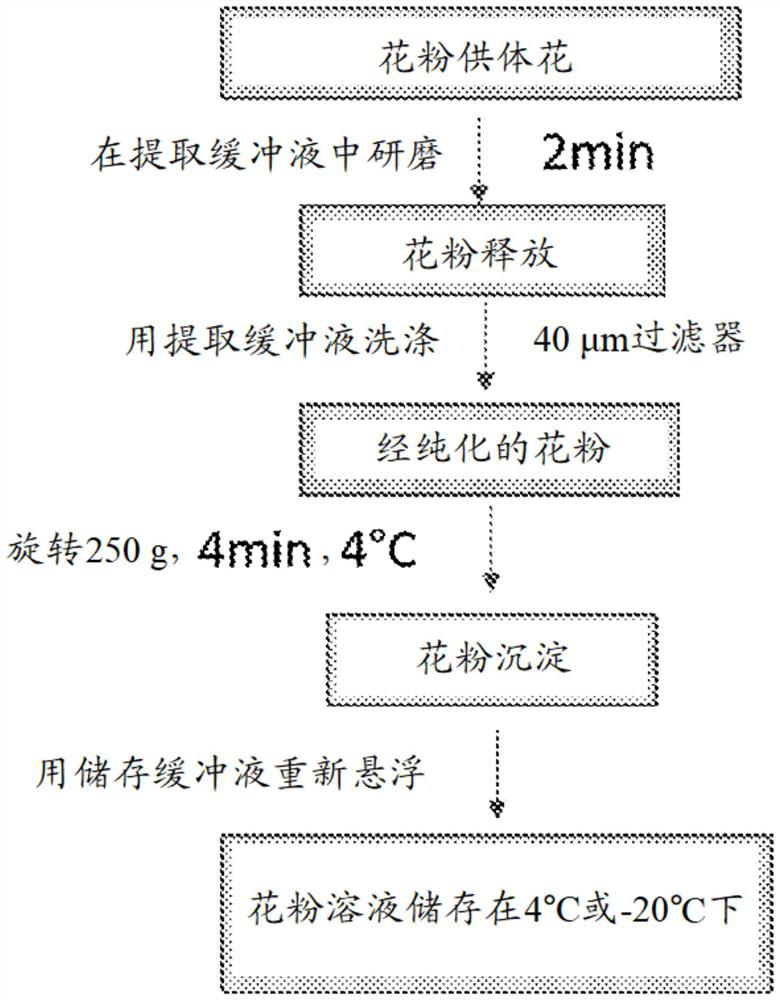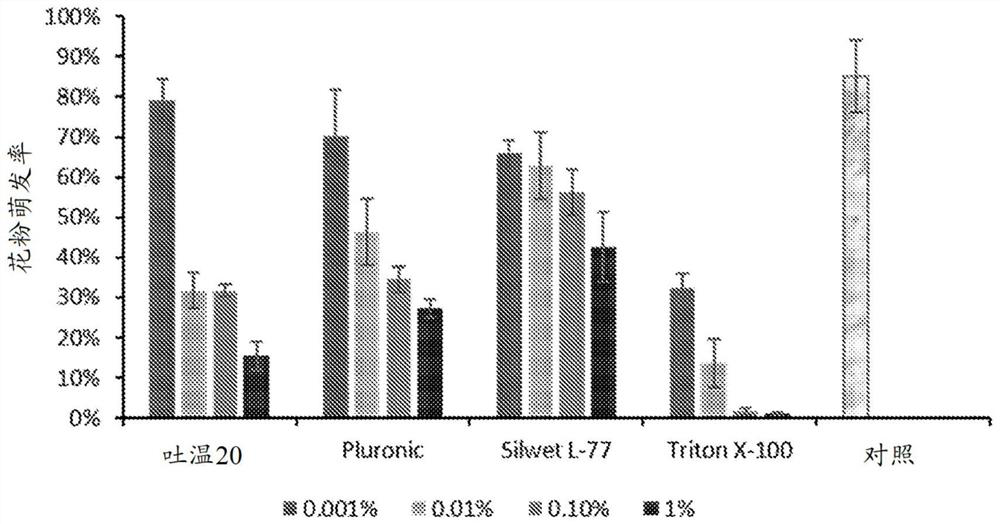Cross pollination by liquid-mediated delivery of pollen onto closed stigmas of flowers from recipient plants
A pollen and plant technology, applied in the field of agricultural biology, can solve time-consuming, labor-intensive, complex and other problems
- Summary
- Abstract
- Description
- Claims
- Application Information
AI Technical Summary
Problems solved by technology
Method used
Image
Examples
Embodiment 1
[0039] Example 1. Improved method for pollen collection, purification and storage
[0040] In some plants, especially soybeans, pollen collection is difficult due to the size and structure of the flowers. Furthermore, soybean pollen grains are relatively small in size (approximately 26 μm) and are present in relatively small quantities in a single flower (approximately 3000 to 7000 pollen grains / flower) (Palmer et al., 1978). To meet the needs of large-scale pollination using the methods described here, liquid-based platforms can be developed to optimize collection, purification, and storage of donor pollen. This includes the steps of breaking up the collected flowers (e.g., by grinding or homogenizing by using a bead mill homogenizer with or without liquid) to release the pollen, and filtering the broken flowers to purify the released pollen. pollen, the purified pollen was collected by centrifugation, and the purified pollen was resuspended into a solution suitable for stor...
Embodiment 2
[0042] Example 2. Development of solutions for pollen delivery
[0043] For liquid pollination of plants, pollen grains obtained from donor plants can be mixed into a liquid solution to facilitate delivery into flower buds. The components and their concentrations in the pollen liquid solution are important to the efficacy of the solution because they affect not only the pollen viability itself, but also the success of the pollinated plant in producing hybrid seed sets. However, while efficacy can be improved by optimizing the components and concentrations in a given pollen solution, many substitutions and modifications can be made while still achieving pollination, as shown in Table 1 below.
[0044] Table 1. Measurements of pod success when pollinated using various pollen solutions
[0045]
[0046] In order to reduce the surface tension between the pollen liquid solution and plant tissue, tests were performed to identify suitable surfactants that would not interfere with...
Embodiment 3
[0051] Example 3. Liquid-mediated pollen delivery in soybean plants
[0052] A suitable liquid-mediated pollen delivery method was assessed by the dye inspection method using soybean flower buds. Injection buffer (20% sucrose, 0.04% xanthan gum, 15U / LPME, 0.001% Tween 20, and Allura Red AC 0.01%) was injected by inserting a syringe needle at the bending point of the longest sepal until excess liquid seeped out. Injection buffer is delivered into hooded flower buds. Five minutes after injection, flower buds were dissected to check for red staining on the stigmas. Red staining on the stigma indicates that the applied liquid successfully contacted the stigma ( Figure 5 D).
[0053] Based on the results obtained from experiments testing the individual components, it was determined that beneficial components of solutions for pollen delivery in soybeans include, but are not limited to, the following components: Xanthan Gum: 0.04%-0.08% (w / v); Sucrose: 10-20% (w / v); PME: 0.01-10...
PUM
 Login to View More
Login to View More Abstract
Description
Claims
Application Information
 Login to View More
Login to View More - Generate Ideas
- Intellectual Property
- Life Sciences
- Materials
- Tech Scout
- Unparalleled Data Quality
- Higher Quality Content
- 60% Fewer Hallucinations
Browse by: Latest US Patents, China's latest patents, Technical Efficacy Thesaurus, Application Domain, Technology Topic, Popular Technical Reports.
© 2025 PatSnap. All rights reserved.Legal|Privacy policy|Modern Slavery Act Transparency Statement|Sitemap|About US| Contact US: help@patsnap.com



